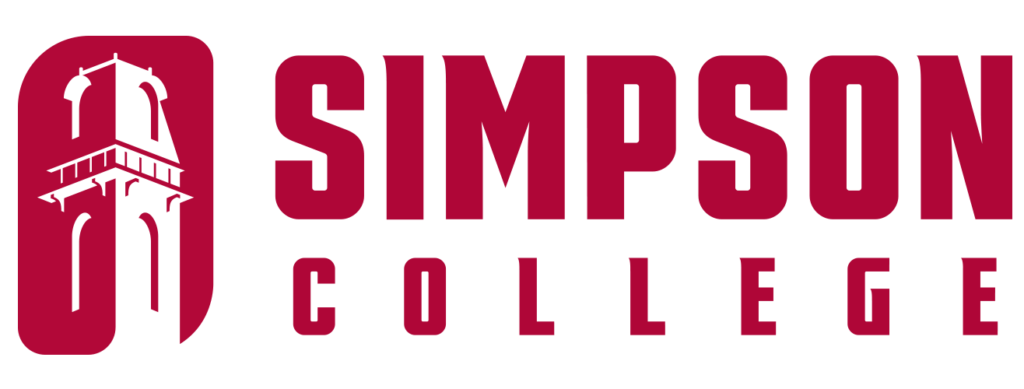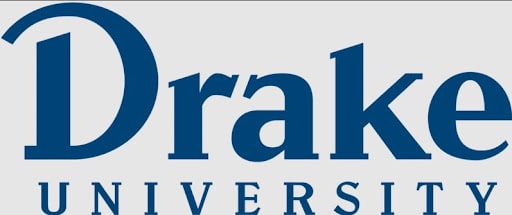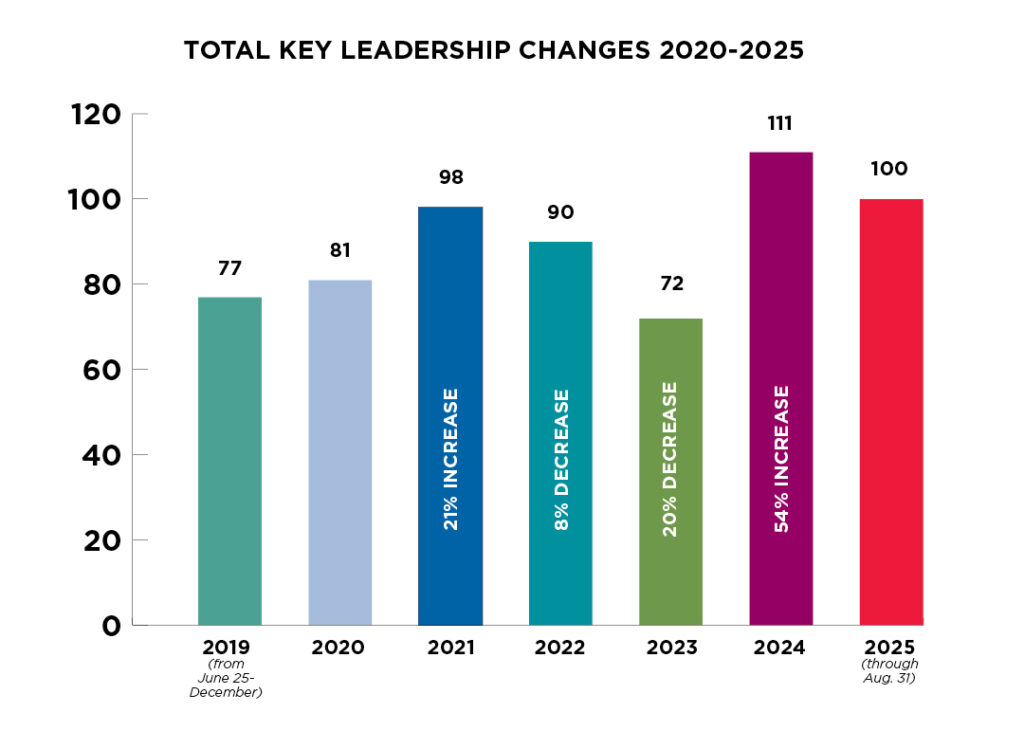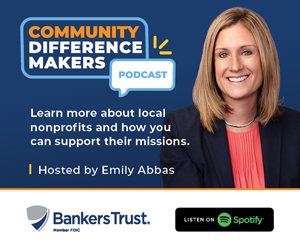HR Data Analytics
How 4 companies are using big data to improve benefits programs

JOE GARDYASZ Sep 11, 2015 | 11:00 am
9 min read time
2,030 wordsBusiness Record Insider, Education, Health and WellnessWant to have a better handle on which of your best employees are likely to stick around and which are likely to jump ship?
How about a clearer picture of whether your wellness programs are actually making a difference in your workers’ health — and insurance premium costs?
Perhaps you’re seeking better insight into what talent gaps you’re likely to have in the next few years through attrition and retirements?
Human resource departments typically have lagged in the use of big data analytics relative to the revenue-generating side of businesses, but executives now are increasingly recognizing the value of applying data analytics to their talent and benefits management programs.
According to Deloitte’s Global Human Capital Trends 2014 report, just 14 percent of human resource departments are currently using data analytics. That compares with 77 percent of operations departments, 58 percent of sales departments and 56 percent of marketing departments.
Why the gap? Some experts cite an over-reliance on surveys, intuition and past experience by HR departments, while others say that human resources officials are too enmeshed in day-to-day transactional issues to analyze longer-term strategy.
Talent analytics is also a high-priority topic, but readiness is still low, the Deloitte survey found. This trend is rated among the top five priorities in every region of the world, yet only 4 percent of organizations surveyed believe they have sufficient predictive talent analytics capabilities. Only 14 percent of companies have any form of talent analytics program in place, yet more than 60 percent want to build a plan this year.
“It’s a relatively new field for companies’ HR (departments) to do some of these predictive analytics,” said Jeff Fuhrmeister, director of Grow People for Kum & Go, which is itself in the early stages of using data analytics for its talent management. “Over the last few years, there has just been more emphasis beyond reporting to having quality data so you can start making business decisions and begin getting into that predictive analytics side.”
Deloitte’s research found that companies that implement true business-oriented talent analytics can double their engagement, improve revenue and dramatically increase almost every business measure by making better people decisions.
Here’s a look at how four Greater Des Moines companies are using data analytics to improve their benefits and talent management programs.
Principal Financial Group
Principal Financial Group has been working for the past three years to lay the foundation for more robust data analytics within its human relations functions, said Beth Raymond, senior vice president and chief HR officer.
“When you have a vision to do business analytics, and especially to get into the predictive piece, you have to be able to enable one system to talk to another,” she said. “So there’s a lot of work that goes into the front part before you can pull the data out of the back part.”
By the end of this year, Principal will have data on 95 percent of its global workforce on one system, giving it for the first time a truly comprehensive ability to analyze its employee population.
With its enhanced data warehouse, Principal will be able to produce three- and eventually five-year forecasts of employee turnover and retirements so the company can continually keep its talent pipeline full, Raymond said.
“Obviously we’re looking at the trends in increased retirements, so we’re trying to get a better sense for where we’re going to see more turnover and retirements so we can more proactively understand the gaps and be proactive about hiring by knowing what’s coming,” she said. “For example, with computer languages, how are we hiring individuals more proactively to make sure we don’t have gaps as people retire?”
In 2016, Principal will begin rolling out interactive dashboards within its HR organization and then to senior executives, to include some forecasting tools that the leaders can actually use on their own, Raymond said. “The intention is to get this real-time data into their hands, so they’ll have the ability to look at some of these predictive analytics by business area, so they’ll be able to see it on a more granular level to react to in their businesses.”
Bankers Trust
Using services of several third-party data partners, Bankers Trust Co. regularly fine-tunes its wellness program offerings by bringing together health insurance claims data, biometric screening data and other sources to provide a holistic, aggregated picture of its employees’ health, said Jennifer Bryant, senior vice president of human resources.
“We look at claims data monthly, biometric data annually and wellness program statistics a couple times a year,” she said. “We see only aggregate data, not any individual or small group results.”
As a result, Bankers Trust has seen a decrease in the percentage of its employee population with metabolic syndrome since putting its wellness plan into place, and was able to hold employee contributions to the company health plan steady in the most recent plan year, “which we were thrilled to be able to do,” Bryant said. Metabolic syndrome is a cluster of conditions — increased blood pressure, a high blood sugar level, excess body fat around the waist and abnormal cholesterol levels — that occur together, increasing the risk of heart disease, stroke and diabetes.
Bankers Trust tailors educational lunch-and-learn programs to health topics it believes can have the biggest impact, particularly with any portion of the employee population at risk of developing certain conditions related to metabolic syndrome.
“For example, if we were to have a population with borderline high cholesterol, and we could see from our claims data an increase in related prescription costs, and our wellness program indicates we’re still high in participation for exercise/activity, we might target education programs to what people can do to naturally control cholesterol through their diet,” Bryant said.
Last year, Bankers Trust added a third tier to its wellness program to provide incentives for employees who have one or two metabolic syndrome conditions to reduce that to no conditions. “Our data indicated that this was a place where we could have a real impact,” Bryant said. “Over the longer term, we will be reconsidering what additional things we might include in fitness reimbursement to target a broader population that might need a lifestyle change but aren’t going to a gym or taking a class.”
Holmes Murphy
One of the biggest advantages of the emerging data analytics technology is the speed at which it can enable leaders to adjust health improvement and benefits programs based on real-time results, said Maggie Hare, benefit technology officer with Holmes Murphy & Associates.
“With health care reform, we see many more (of our clients’) C-suite executives becoming involved in the health status of their employees,” Hare said. “And they are able to see the results of the programs they’re investing in more than in the past, so that requires us to invest in big data and analytics to continue to improve our ability to report on results.”
After searching for more than a year for the right data analytics partner, Holmes Murphy invested in a technology platform developed by Deerwalk for its data analytics needs. “All of their technology has been developed in the last five years, which allows us to be incredibly flexible with the data we’re able to house and how we report on that data,” Hare said. “We envision very quickly needing to track new data.”
In addition to aggregating data from traditional health care carriers, the platform enables Holmes Murphy to pull in other data such as disability and workers’ compensation claims and even data gathered through employer-offered fitness programs, such as Fitbit data.
“It allows employers to have a much more robust view of their employee population, Hare said. “For example, we’ve never been able to look at disability claims with health data before, and now we can pull in absentee data and productivity measurements.”
With the new data platform, real-time data will be available so C-suite executives and HR representatives can immediately evaluate whether certain initiatives are cost-effective.
“(In the past,) we may not have been able to tell an executive whether a plan design change would affect 5,000 people or 10 people, or produce savings of $10,000 or $1 million,” Hare said. “Now in the meeting, we can evaluate plan design changes and identify changes that may impact a very small portion of the employee population, but have a big impact on cost savings.”
Will smaller companies be able to benefit from these data and analytic tools? To some extent, Hare said.
“The data and analytic tools can be used for any size employer; the variable is being able to obtain the claims data,” she said. “Many times a carrier won’t release claims data on fully insured clients — so that’s the first decision point on whether we will be using it for smaller clients. And below 100 lives, we also begin to have health care privacy issues.”
Holmes Murphy currently has implemented the analytics platform with about 50 percent of its self-insured clients, with the goal of serving 100 percent of its self-insured companies. “Once we have all of our self-insured clients implemented, we will begin identifying carriers who are willing to release claims data for fully insured groups as well,” Hare said.
Currently about 60 percent of Holmes Murphy’s clients in Greater Des Moines are self-insured, and that number continues to trend upward, primarily due to health care reform, she said. “As more move to that self-insured environment, an ever greater part of our business will be able to take advantage of data analytics and reporting.”
Kum & Go
Kum & Go, which already has a sophisticated data mining capability for analyzing operational aspects of its stores, is now beginning to turn its attention to predictive analytics for talent management.
“For years, what we’ve had is just that baseline employee information,” said Jeff Fuhrmeister, Kum & Go’s director of Grow People (Human Resources) Systems and Processes. “Now we’re beginning to take a look at that and take it to the next level — beyond pay and benefits. Now, organizations are starting to see some of the value of the predictive analytics on the sales side, and take that to the next level on the HR side — to predict what could happen if they make various changes within the organization.”
Some of the data needed are obviously already available, such as employment background and worker experience, while other data will come through assessments of prospective or newly hired employees through various vendors. “Just like anything, one size does not fit all,” Fuhrmeister said. “The assessments are each tailored to specific roles.”
Some of the questions that Fuhrmeister and his team hope to address with predictive analytics are:
What drives employees to your organization, and what makes their quality higher?
How can you evaluate who is right for those roles; what are the right skills and backgrounds; how do you define that quality hire?
What can we be doing to ensure we’re hiring the right talent for our front-line employees — and what gets them to stay with the organization?
Fuhrmeister doesn’t expect it will be a tough sell to get the company’s leaders on board with the initiative. In fact, “there have actually been requests from senior management to look at some of this information,” he said. “They are definitely open to that.”
Insight that can be gained from predictive analytics:
What skills and job experiences produce high performance?
What are the turnover trends?
Where are the retention hot spots?
What is the skill loss from turnover?
What would expansion into new markets mean?
Is our top talent groomed for leadership positions?
How is our compensation compared with the market?
Is high performance being rewarded?
Source: Oracle
By the numbers:
60% Percentage of companies now investing in big data and analytics tools to help make their HR departments more data-driven.
31% Percentage of organizations that have hired additional staff for their analytics teams in the past year.
4% Percentage of companies with the capability to perform predictive analytics about their workforce.
Sources: “High Impact of Data Analytics,” Bersin by Deloitte, 2013; “Big Data in Human Resources: A World of Haves and Have-Nots,” Forbes, 2013










